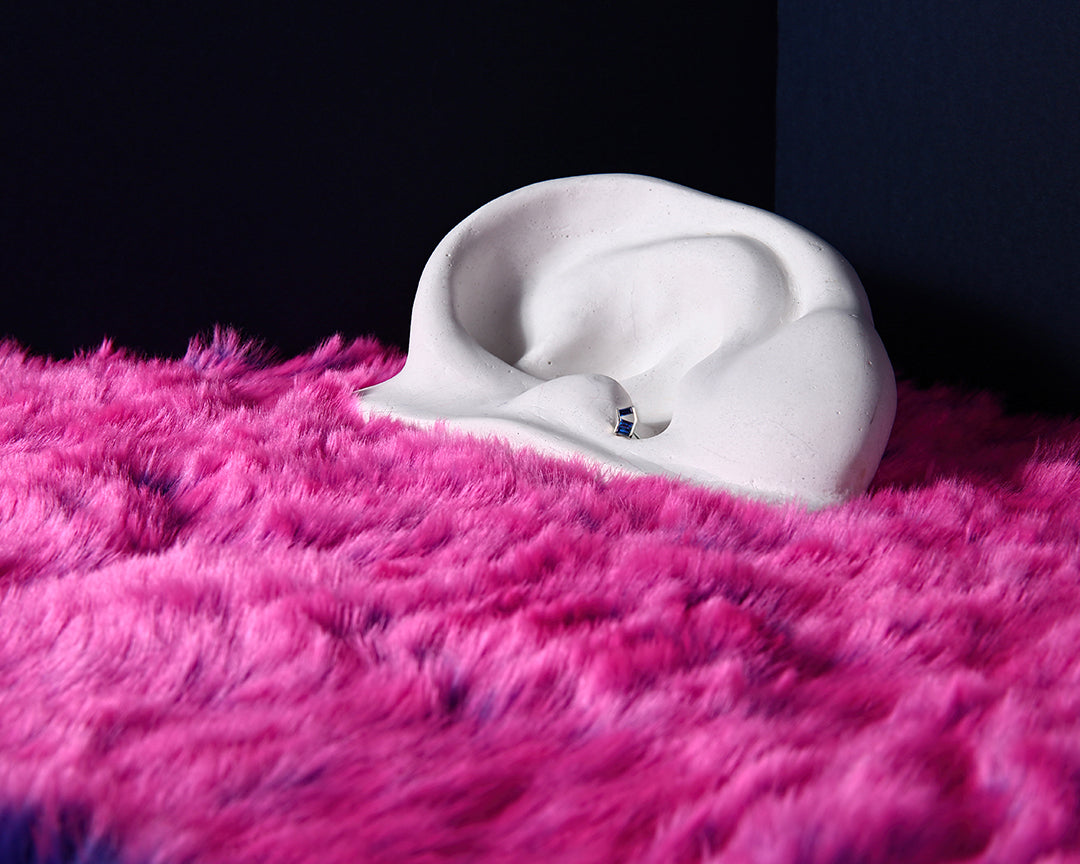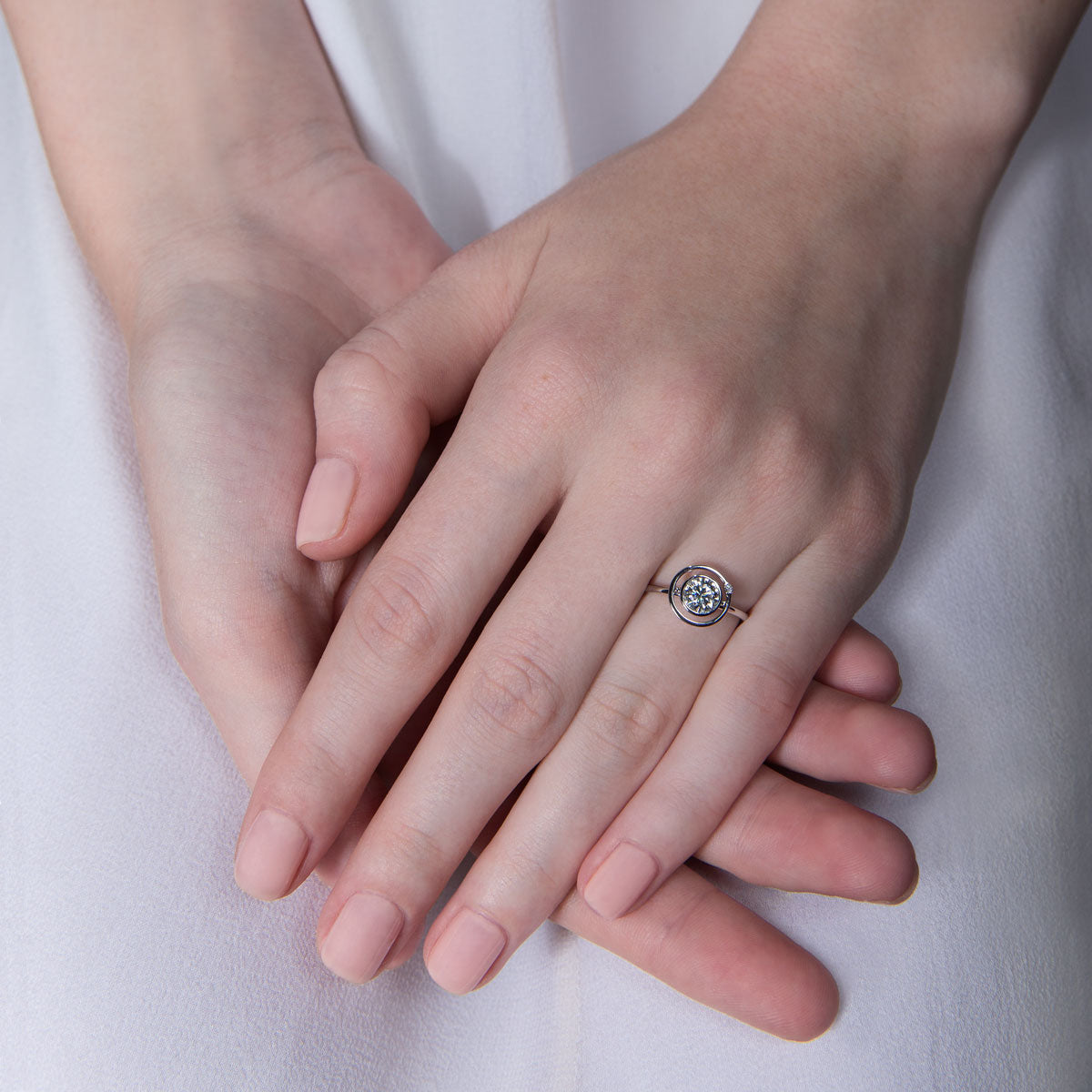Some say diamonds are a girl's best friend. They are shiny, pretty, and are the toughest natural material on Earth. The word ‘diamond’ comes from the Greek word ‘adamas’, which means ‘unconquerable’. It is this symbolic meaning that makes diamonds the perfect gift to mark an eternal love and a lifelong commitment.
What Exactly Are Diamonds?
Diamonds are a naturally occurring form of carbon that formed when they were trapped deep beneath Earth’s surface and under extreme pressure over billions of years. They were carried to the surface by plate movements and volcanic eruptions, and are mined from the mantle rocks.
It has a unique crystal structure that causes reflection and refraction as light passes through, which gives it its brilliance and shine. It is also this lattice structure that makes them the hardest natural material, 58 times harder than anything else in nature!
Most diamonds have slight tints of yellow and the most colourless ones are the most valuable because they are rare. Diamonds can also be found in fancy colours and their colours arise from the other mineral substances trapped within the crystal. The specks of impurities found within diamonds are called inclusions and while they render a diamond less valuable, these inclusions actually reveal how deep the diamonds were when they formed – some were as deep as over 700KM beneath Earth’s surface!
The 4 Cs of Diamonds
When mined from the earth or ancient riverbeds, rough diamonds look like pieces of ordinary molten glass. They have to be shaped and polished into its final form, and are commonly marked by the 4 Cs – Carat, Cut, Clarity, and Colour.

The 9 largest stones split from the famous Cullinan Diamond, before cutting. Their sizes range from Cullinan I’s 530.2 carats to Cullinan IX’s 6.8 carats.

The final cut and polished stones of Cullinan I to Cullinan IX.
Top: Cullinans II, I and III. Bottom: Cullinans VI, VIII, IV, V, VII and IX.
Carat – Weight
Carat is a measure of a diamond’s weight, and one carat is equivalent to 0.20 grams. The price of diamonds are known to grow exponentially to their weight. For example, given a diamond of similar cut, clarity, and colour grade, while a diamond of 0.50 carat would cost around S$2,800, a 1-carat diamond would cost $11,000, and a 5-carat diamond could cost more than $300,000!
*Prices assume a brilliant cut, F colour, and VVS2 clarity. Do check with us for exact prices and availability.
The carats of a diamond is sometimes measured by points. In the point system, each carat is divided into 100 points, so a 0.5 carat diamond is also called a 50-points diamond.
Cut – Shape and form

Side view of a Round Brilliant cut. Adapted from Wikimedia Commons.
Cut (proportions, symmetry, and polish) is a measure of how a diamond’s facets interact with light. Cut also refers to the way a diamond is cut into its final shape and form – often referred to as the shape of the diamond.
Diamonds are cut based on several factors:
-
Original shape of the stones
-
Presence of inclusions
-
Angle of cut to preserve the most carat weight
-
Demand and value of the cuts
They are most often cut into Round Brilliants as one stone can be cut into two pieces with minimal loss of weight.

Before and after, turning one diamond stone into two Round Brilliants. West Diamonds.
A diamond’s cut affects its
-
Brilliance – the shine caused by reflection
-
Fire – flashes of colours caused by light dispersion
-
Scintillation – areas of light and dark caused by internal reflections
At State Property, we enjoy working with the Cushion, Marquise, and Round Brilliant cuts.
Colour
Colour refers to the colour of the diamond, and is observed due to the dispersion of light through the diamond's crown. Take note, the colour of a diamond is examined through its side and not from the top. A colorimeter is used when grading a diamond’s colour.

Diamonds range from a scale of D (colourless) to Z (light yellow). Colourless diamonds are rare and hence the most valuable. At State Property, we only use diamonds that are at least F grade or better. Colourless diamonds are most commonly set against a White Gold base to showcase its brilliance.

Diamonds of various colours. Geology.com.
Diamonds also come in fancy colours, and only 1 in 10,000 diamonds has such colours. From green to blue, and even red, the rarer the colours, the more valuable the diamond. Unlike colourless diamonds where the most colourless ones are the most precious, fancy diamonds with more intense colours are more highly valued.
Clarity
Clarity is dependent on the natural inclusions found within the diamond. A diamond's clarity is graded by experienced gemologists under 10X magnification who will mark the number of, the size, the brightness, and the placements of these characteristics.

The clearest of diamonds are marked FL (flawless) or IF (internally flawless). The more the inclusions and the bigger and more prominent they are, the poorer the clarity. The lowest grades of I1 to I3 diamonds have specks that are visible to the eye.
At State Property, we use a minimum of VS-clarity diamonds in our pieces, which have very slight flaws that cannot be seen with the naked eye.
Diamonds in Jewellery
While smaller, loose diamonds are often used as embellishments for all types of jewellery, the bigger gems are often used as a centrepiece in engagement rings, earrings, and pendants. As diamonds will be set onto a base metal, their shapes, the way they are laid, and even the colour of the metal will affect the appearance of the diamond jewellery.
For example, if you were to set a colourless diamond onto a Yellow Gold base, it will naturally radiate the yellowish hue of gold. As such, you might consider setting a colourless diamond on a White Gold base instead or opt for a lower colour grade diamond (and hence cheaper) diamond on Yellow Gold as the yellow tints of the diamond will blend in subtly.
A diamond’s setting can also affect how it looks. The same diamond will look bigger on a four-prong than a six-prong setting. The halo setting on another hand has a ring of small diamonds surrounding the centre stone, which accentuates its grandeur.
All of State Property’s diamond pieces are carefully designed to frame the gemstones so as to highlight their unique visual properties.
The best way to choose a diamond jewellery is to work with reputable jewellers and to try on samples to see how it looks on you. When buying diamond jewellery, be sure to check on the authenticity of the diamonds by requesting for their certification. All of the diamonds we use at State Property are evaluated and certified by the Gemological Institute Of America (GIA) so you can shop confidently with us.
More of State Property’s Diamond Jewellery
When choosing a diamond jewellery, we highly recommend to work with reputable jewellers and to try them on to see how the piece looks on you. Here are some of our favourites
Hayes Ring
The Hayes Ring is part of the Gravity collection – a series of engagement rings designed to celebrate the passionate desires and attraction of love. Available in 18K White, Yellow, or Rose Gold, the Hayes features a Brilliant Cut diamond in a bezel setting
Bespoke Engagement Ring
The ring was crafted for a client who was looking for a ring inspired by a bee. The bee symbolised his fiancée who is a hard worker.
With an 18K Rose Gold base, the white enamel stripes models after the bee stripes, whilst the pointed bottom of the ring shank is again a conceptual nod to the bee.
The bespoke ring bears a Cushion Cut diamond with a perfect 1:1 ratio. The perfectly square-shaped gem is very hard to find but necessary for the diagonal setting in this ring.
Adorned on the sides are two pear-shaped Padparadscha Sapphires that are highly sought after for their rare colours (a mix of pink and orange). ‘Padparadscha’ is Sinhalese for Aquatic Lotus Blossom and their rarity makes them extremely valuable. These side stones are further accented with small white diamonds with intricate bee-wing details on the prongs.
Always wanted a unique piece of jewellery that’s tailored just for you? Find out more about our bespoke services and turn your ideas into reality.
REFERENCES AND FURTHER READING
Diamond – Wikipedia
The Diamond Zone – ThoughtCo
The Cullinan Diamond – Wikipedia
Diamond Quality Factors – GIA
Brilliant Cut Diamonds – Cape Town Museum
Diamond Shapes – With Clarity





 Uncut diamond from Lake Argyle, Western Australia.
Uncut diamond from Lake Argyle, Western Australia.







Share:
Convertible Jewellery: Transform These Pieces To Match Your Style
Buying Gold Jewellery? Here’s What You Need To Know